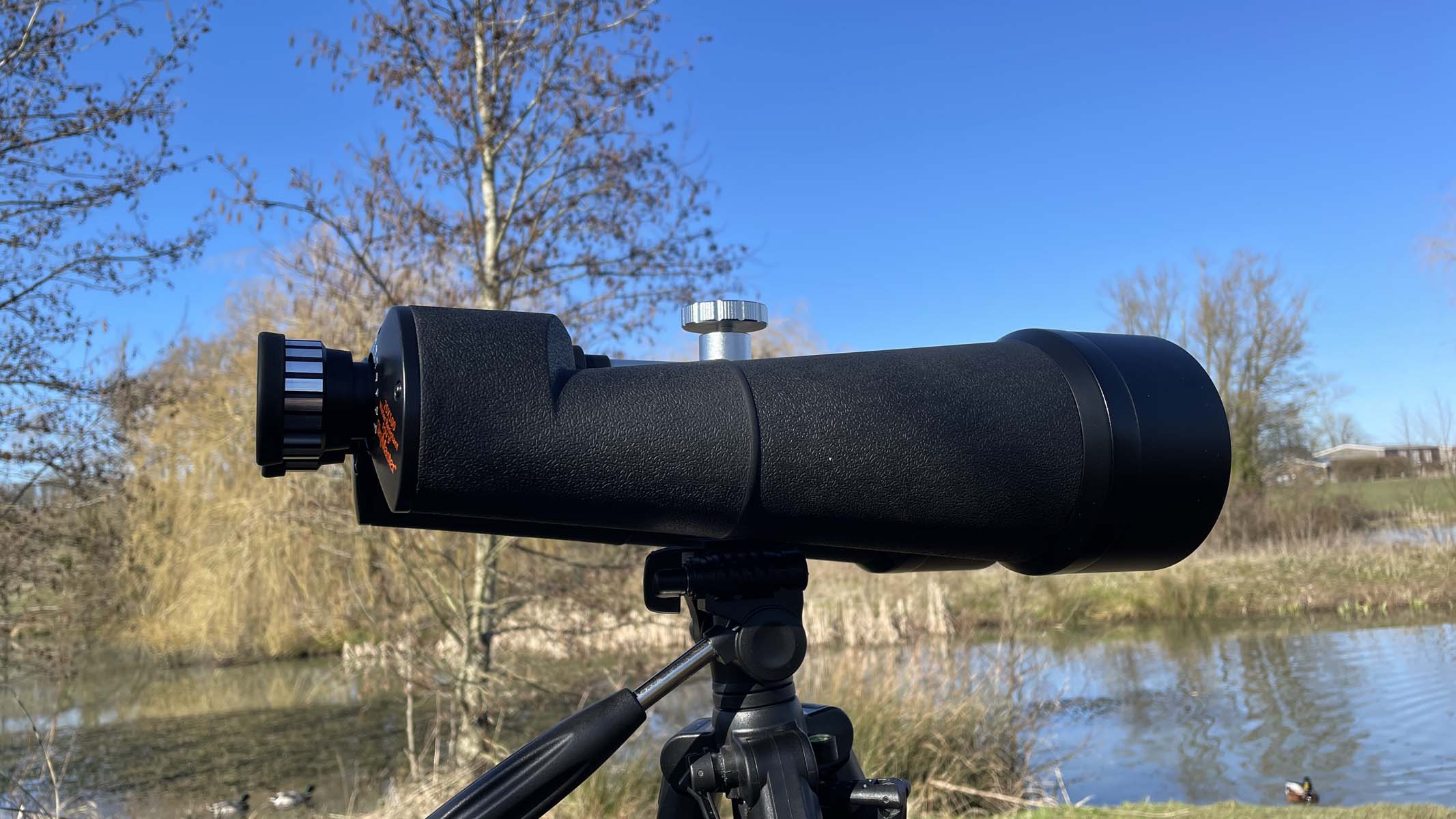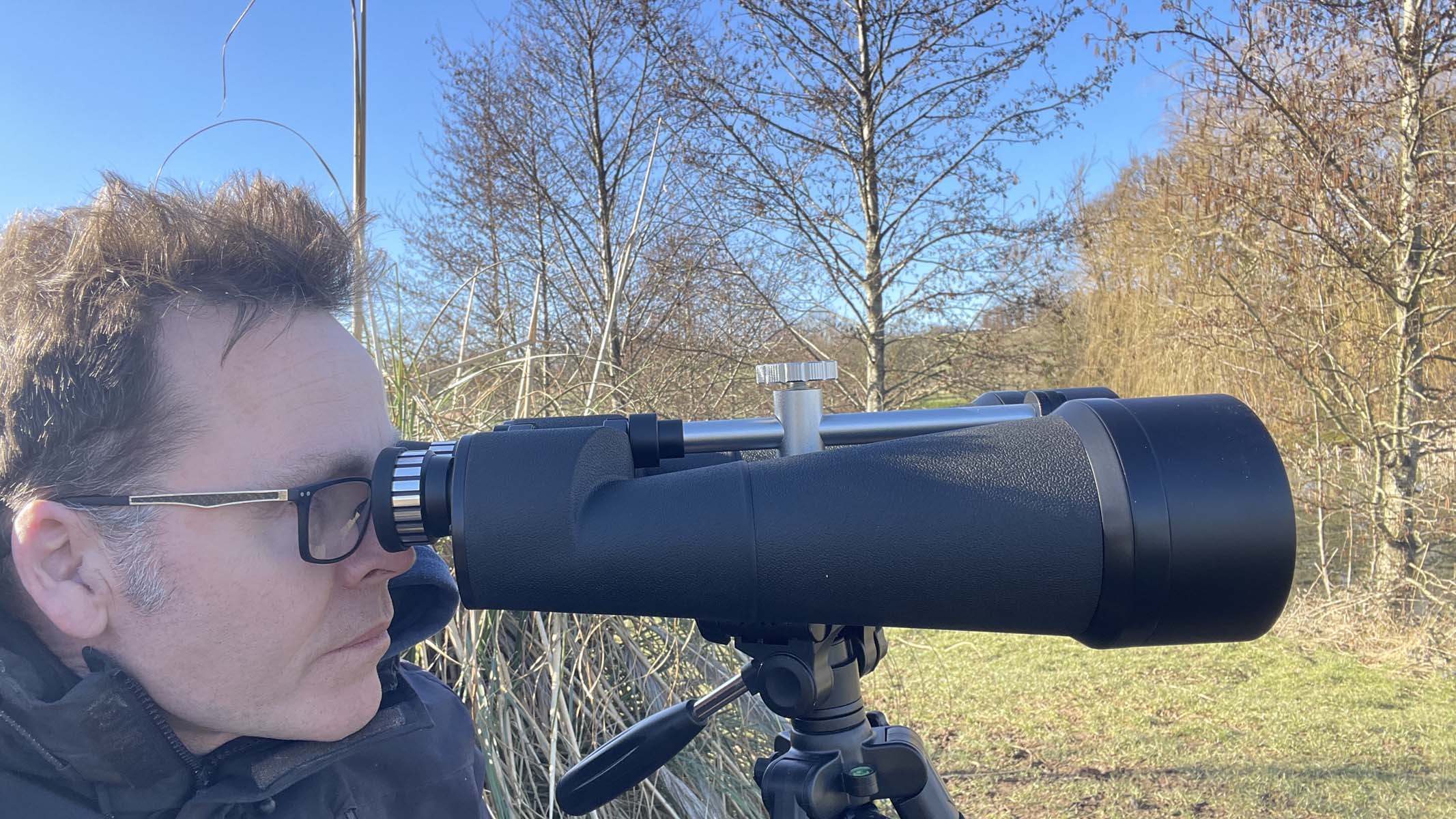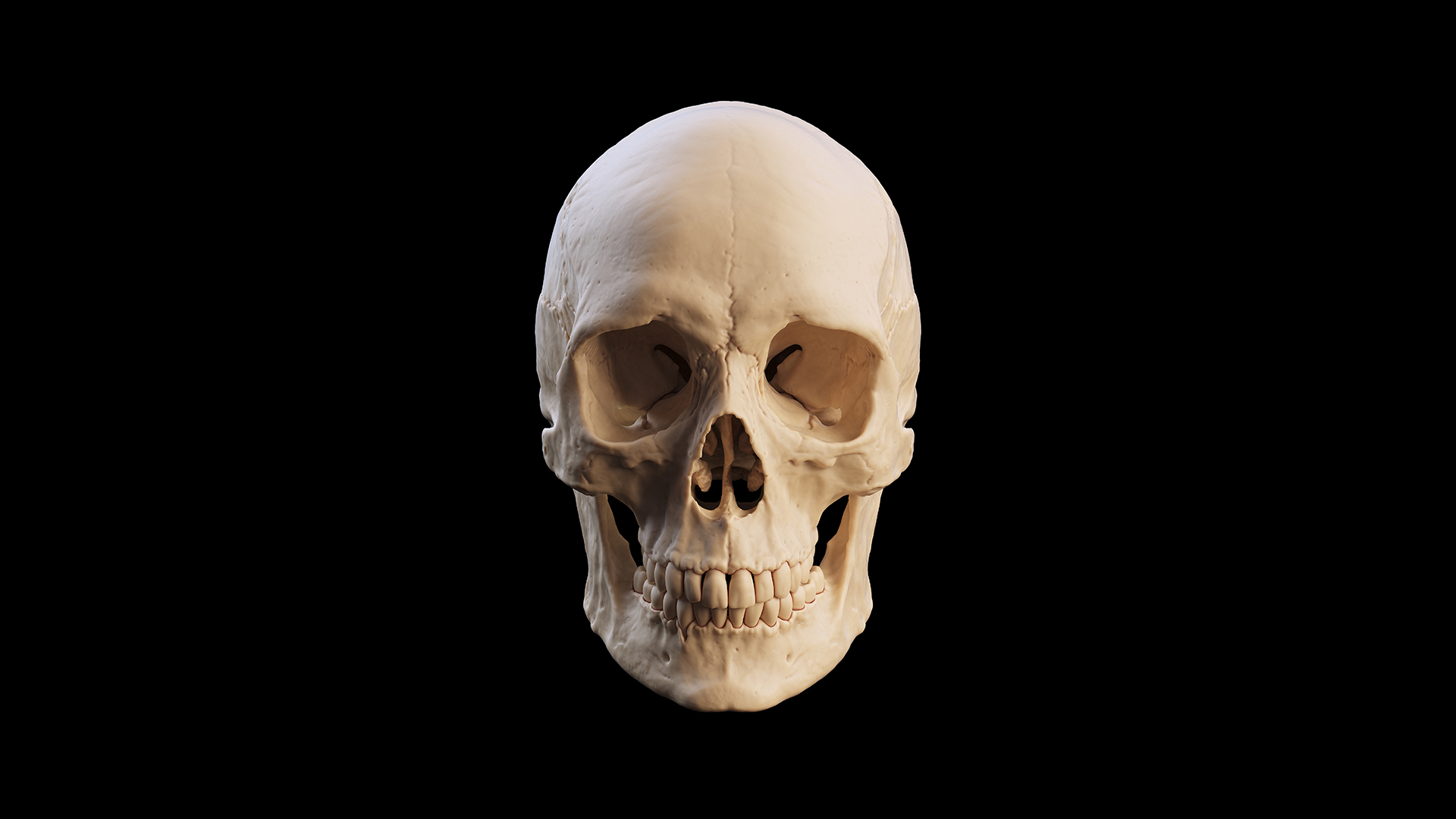Why you can trust Live Science
Our expert reviewers spend hours testing and comparing products and services so you can choose the best ones for you. Find out more about how we test.
The Celestron SkyMaster 25×100 binocular can provide beautiful lunar views, with the bonus of keen planet-spotting ability, making it one of the best binoculars and best binoculars for stargazing.
They are heavy, so a sturdy tripod is a must. The mounting tube has a movable screw which bites down on the tube and can then be tightened. We found it often didn’t fully engage in certain areas, leaving the binoculars free to move from the selected location, but once mounted properly, the SkyMasters are really impressive.
Key specifications
Magnification: 25x
Objective lens diameter: 100mm
Prism type: Porro
Field of view at 100 yds (100 m): 156 feet (52m)
Eye relief: 0.59 inches (15mm)
Water-resistant: Yes
Tripod adaptabler: Yes
Dimensions:1 0.1 x 5.1 x 15.28-inches / 256 x 130 x 388mm
Weight: 8.75 lbs (4 kg)
The 100mm objective lens lets in lots of light, even into the early hours, while stargazing in a local dark sky area. The lunar observation was particularly impressive, with craters being shown in great color and detail. With the 25x magnification, more distant objects are harder to observe, but we found that the SkyMasters revealed hidden stars that are invisible to the naked eye.
Overall, the SkyMaster 25×100 binocular is an excellent night sky observation tool and very competitively priced. It’s an all-around win for Celestron.
Celestron SkyMaster 25×100 review
Design & Comfort
- Very heavy (8.75 lbs/4kg)
- Individual eyepiece focus
- Not a rugged design
The SkyMaster has a rough, textured rubber coating that gives it a good grip, which is lucky considering its weight! The coating is rather thin, though, so dropping them isn’t a good idea.
As mentioned, this binocular needs to be tripod-mounted, and you need to ensure that your chosen tripod has a sturdy design. They are listed on the Celestron website as water-resistant, so care should be taken when using them on damp or rainy nights, though we didn’t encounter any problems with misting or ingress during our tests.
Although it’s possible to use them briefly handheld, they are too heavy to use for longer than a few minutes, and small children would be unable to use them without a tripod.
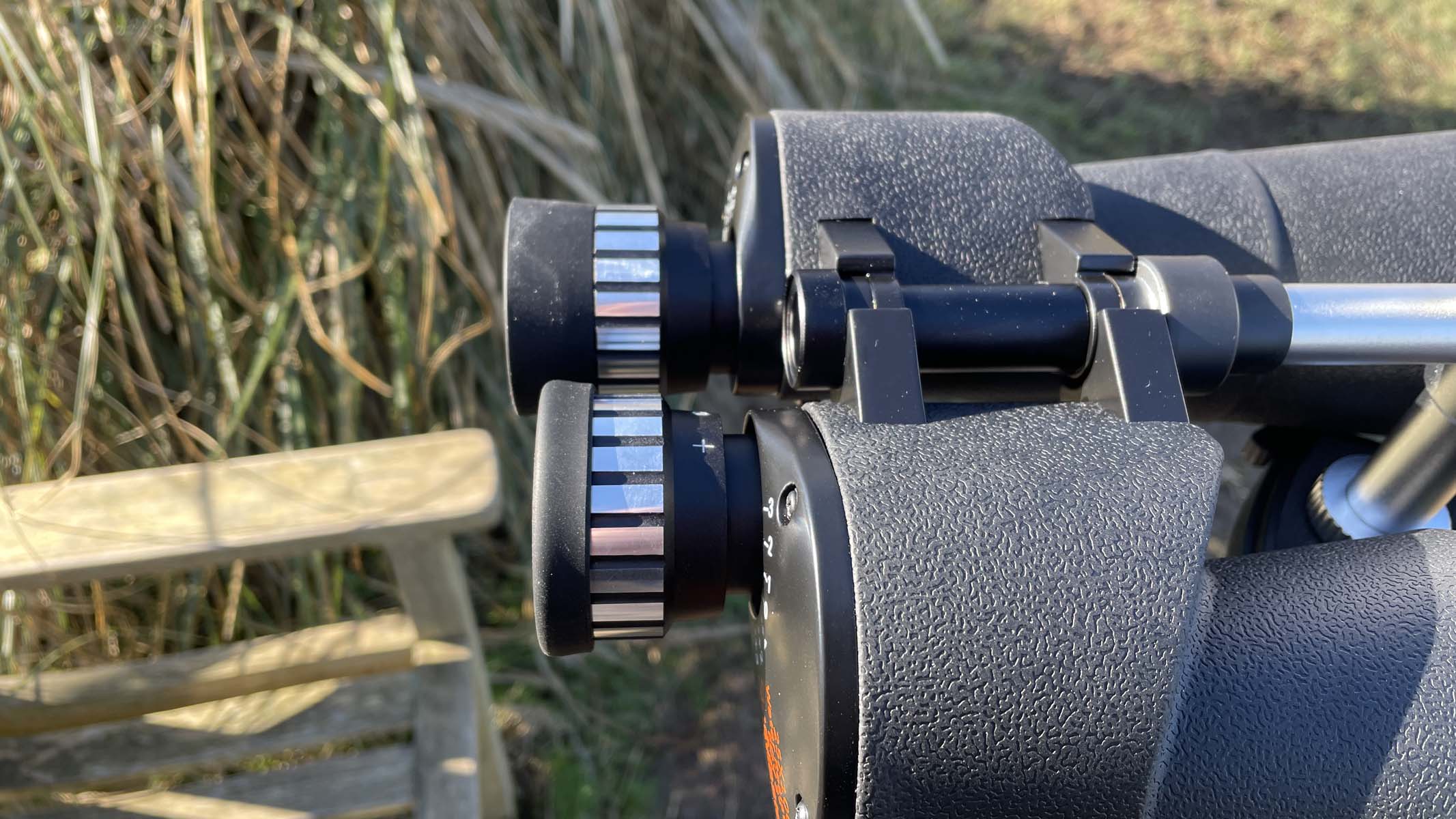
Focus is achieved by individual adjustment of each eyepiece. Initially, we found this quite awkward, but once the left eye is adjusted, followed by the right, it’s unnecessary to adjust again while stargazing. Using this system to bird-watch, we soon got used to the idea, but it does limit their use for this activity as adjusting both eyepieces individually makes focusing on moving subjects tricky.
The eye relief is ok at 0.59 inches (15 mm), making it possible to use the binoculars while wearing glasses. The outer rubber cover of the eyepieces folds down to allow for this.
The thin rubber material on the outer casing gives a good hand grip but offers little protection from knocks and drops. The carry case is like a rucksack but, again, is constructed from very thin material. We would have liked to have seen a thicker, more protective case for such hefty binoculars.
The overall design gives an impression of good quality, and they look like they mean business.
Optics
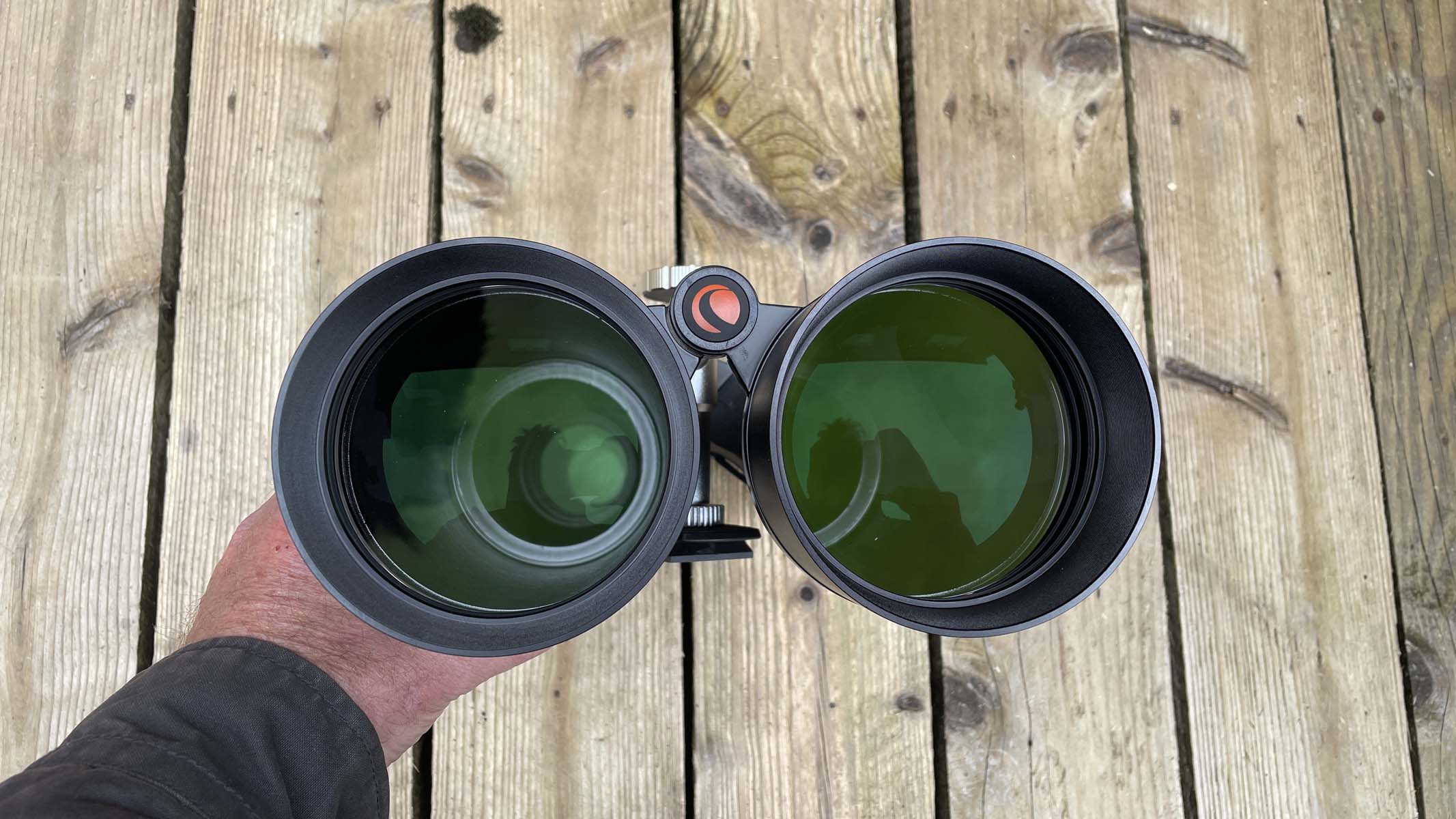
- Porro prism design with BaK-4 glass
- Lenses are multi-coated
- Large 100 mm objective lens
The combination of BaK-4 prisms and multi-coated lenses makes for really lovely, contrast-heavy views of the moon and its amazing surface features. The large 100mm diameter objectives enable plenty of light through the optic, and we found the images presented were top notch. At 25x magnification, there’s a limit to the actual amount of detail, but it’s enough to make using these binoculars a real pleasure, and well worth the price.
Once on a tripod, we were able to view the heavens quite comfortably for extended periods, both sitting down and standing. If your tripod isn’t of a good standard, though, the 25x magnification may cause problems with stability.

There was plenty of light captured with the objectives, enabling dawn and dusk viewing, and we found them also usable well into the night at our test dark sky site. We were able to view Jupiter and its many moons, including the pizza-like Io, to a pleasing level of detail for optics of this magnification.
Large astronomical binoculars tend to have small fields of view: the tubes being relatively long limit the available information, and at 156 ft, the SkyMasters are no different. This doesn’t cause a problem for slow-moving celestial objects, but if you intend to use binoculars during the day, we found them quite challenging to use on anything faster-moving.
What we saw
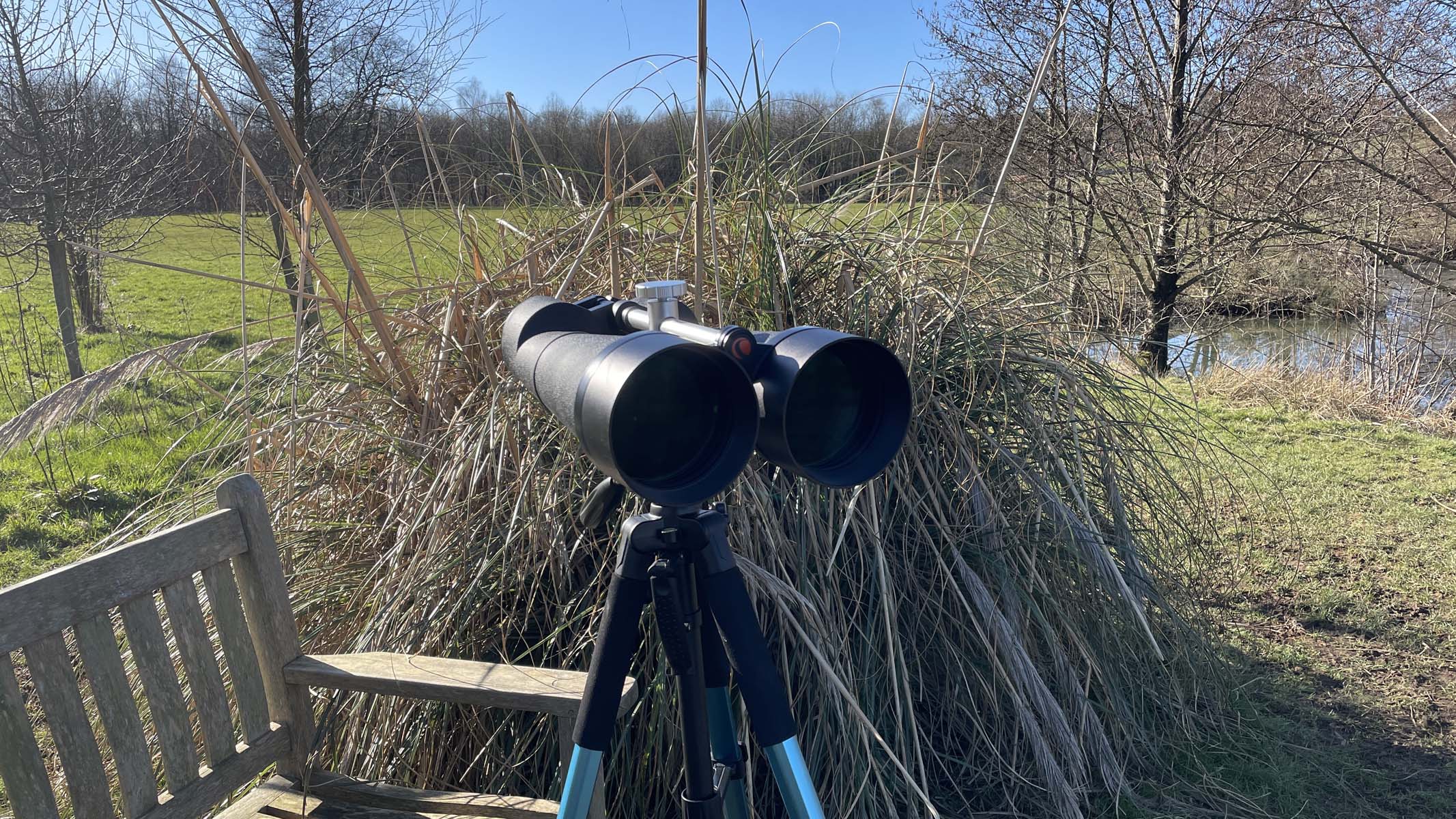
- Clear, high-contrast lunar views
- Jupiter and its many moons
- Nesting birds of prey
Our dark sky site test provided great moon views during its waxing crescent phase. Even at our early evening start with the newly rising moon, we got amazing detail as the recently setting sun cast its last rays. We could differentiate the shadowy detail as the light spread across the relatively small visible lunar area.
Jupiter and its moons were visible to a lesser degree, but we were able to discern some details of the surface, and we focused on it and its visual magnitude of 5.8. Although no details were provided, it’s a good test of the light-gathering ability of the SkyMaster’s lenses.
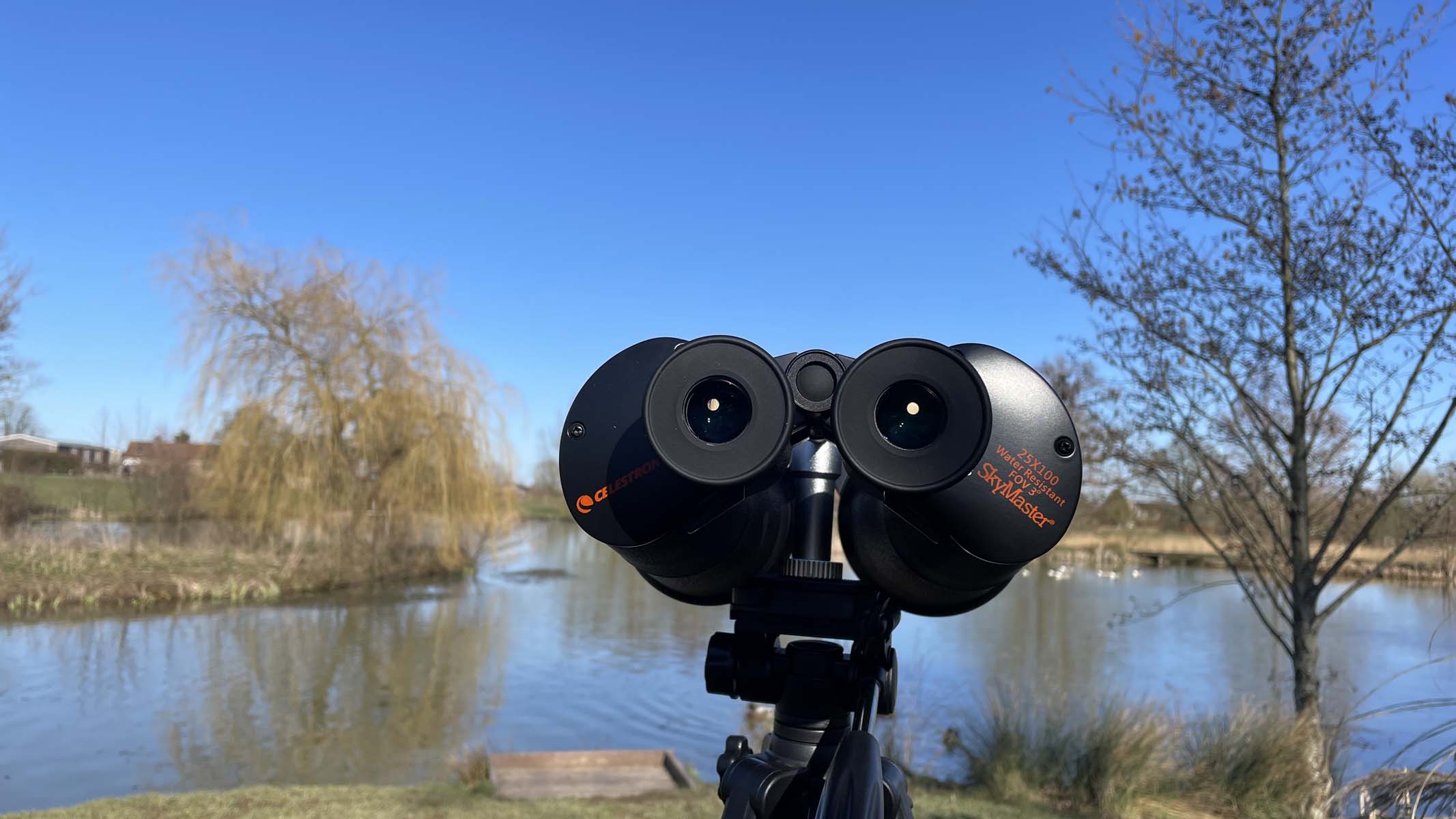
Using the SkyMaster as a bird-watching optic, we found a red kite’s nest being built, focused on this and waited for the birds to land. The large objective lens really came into its own here, as we were battling low light levels at dawn. The views were breathtaking, and the glint of these incredible birds of prey’s eyes was something else.
Watching waterfowl, it’s handy to sit while viewing, as you can track slow-moving subjects more easily. The minimum close focus of 80 feet (24.4m) was no problem here. A rough guesstimate of distance enabled us to quickly set up the tripod once a nest had been spotted, and at 80 feet, you offer no threat to the birds; therefore, they remain in situ with less movement, which helps to get clear, high-contrast views.
Verdict

Buy it if:
✅ You want amazing visuals of the sky at night: They are ideal for stargazing.
✅ You want quality BaK-4 prisms: They have fantastic optics.
Don’t buy it if:
❌ You don’t want to buy a tripod: They’re far too heavy to use handheld.
❌ You will be carrying the binoculars long distances: They’re big and bulky.
Although we found the weight of the SkyMasters difficult, there are ways to minimise this by using a tripod and picking your observation targets carefully. Once you get used to the setup process, we found that both day and nighttime views gave a high level of enjoyment. The level of clarity gathered by these binoculars is impressive at the price point.
The knurled knob on the tripod mount was a pain. With binoculars of this weight, attaching them to a tripod should be easier and more reliable than it is here. Some sections of the tube would hold, but others would feel OK initially, and then the binocular would suddenly slip left or right as it rotated around the central tube. It is awkward in daylight, and even worse in low light.
If the Celestron SkyMaster 25×100 isn’t for you
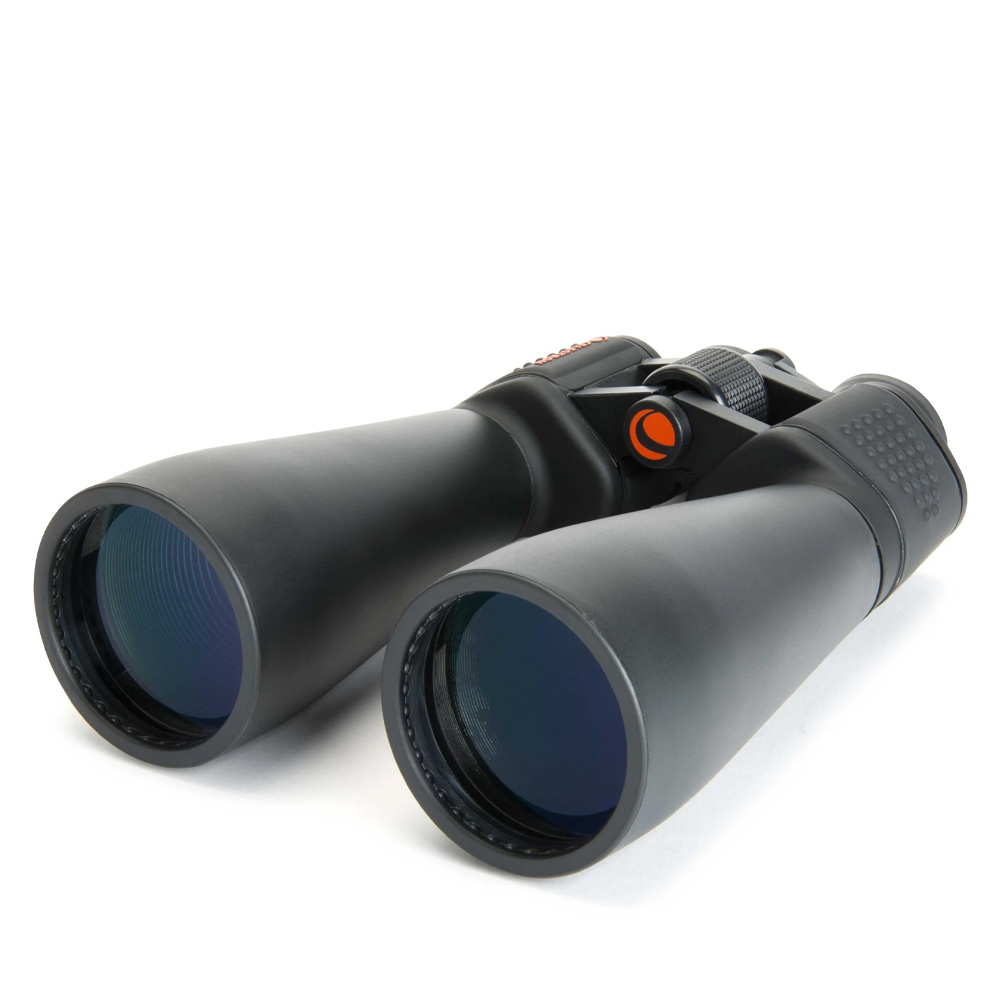
Celestron SkyMaster 15×70
If you want a slightly smaller pair of stargazing binos, we thought the 15×70 variant hit the sweet spot perfectly. They are affordable, provide beautiful (though not fault-free) views and are shorter in length and weigh just 3 lbs (1.3 kg).
Read our full Celestron SkyMaster 15×70 review
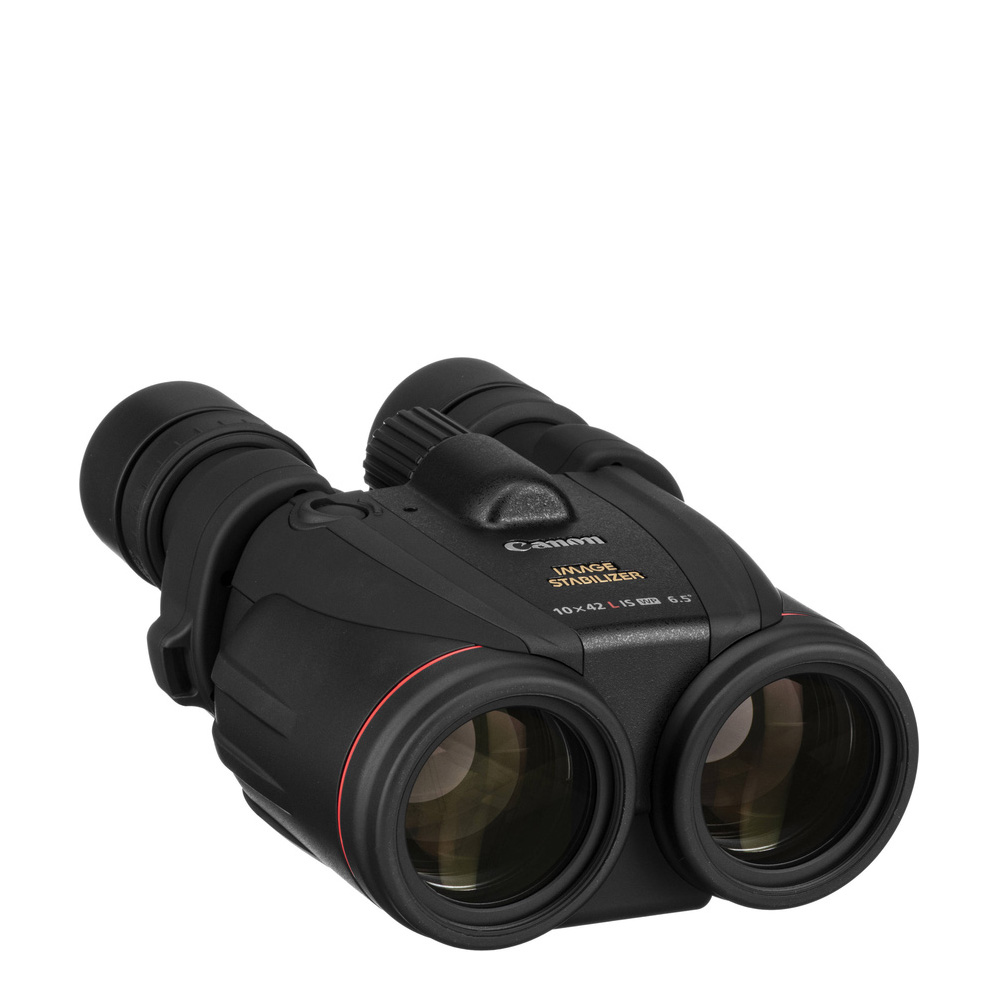
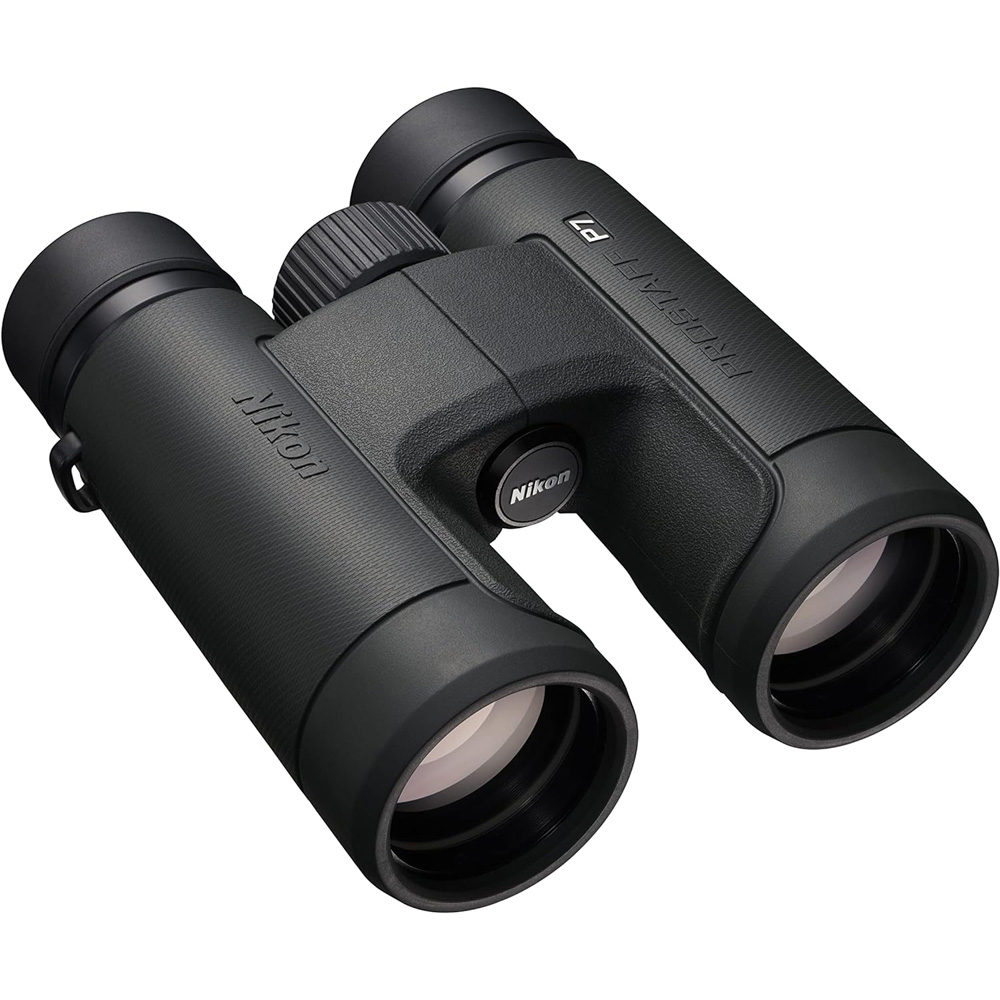
If you’re after a much smaller pair of binoculars to throw in your bag for traveling or to take on camping trips, the Nikon Prostaff P7 10×42 will be ideal for handheld views of the night sky.
Read our full Nikon Prostaff P7 10×42 review
How we tested the Celestron SkyMaster 25×100
We used the Cranbourne Chase Dark Sky Reserve for our skywatching tests. It has a rural level of light pollution, Bortle class 3/4. We also visited local wildlife reserves on the Somerset Levels for birdwatching and distant object observation.





